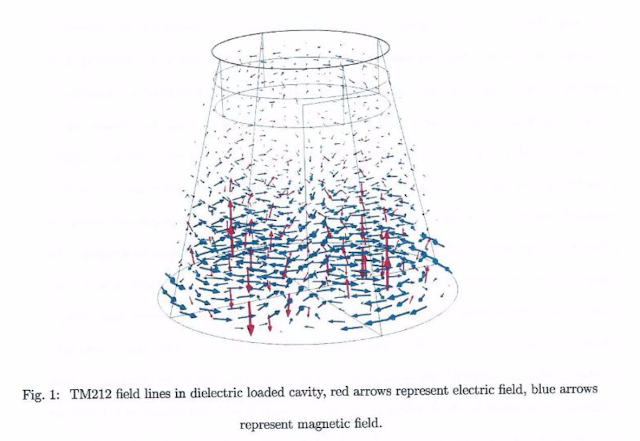New NASA Emdrive paper shows force of 1.2 millinewtons per kilowatt in a vacuum. The only source of energy is electricity. No chemical fuel needed. For the first time EMDrive has been tested in vacuum.
This paper is in print in a peer-reviewed journal of American Institute of Aeronautics and Astronautics (a full copy is in the link below):
https://drive.google.com/file/d/0B7kgKijo-p0ibm94VUY0TVktQlU/view

Possible explanations how it works:
By McCulloch:
http://iopscience.iop.org/article/10.1209/0295-5075/111/60005
http://arxiv.org/abs/1604.03449
http://www.ptep-online.com/index_files/complete/PiP-2015-01.pdf#page=79
http://www.ptep-online.com/index_files/2015/PP-40-15.PDF
By Finnish researchers:
http://scitation.aip.org/content/aip/journal/adva/6/6/10.1063/1.4953807
By Shawyer (the inventor of EMDrive):
Shawyer promises tonnes of thrust from EMDrive:
"Shawyer is now actively working on the second-generation EmDrive with an unnamed UK aerospace company and the new device is meant to be able to achieve tonnes of thrust (1T = 1,000kg), rather than just a few grams." "We're trying to achieve thrust levels that go up by many orders of magnitude, where the q values of the cavities are between 1 x 109 and 5 x 104. Once you reach the levels of thrust we anticipate we will reach, you can apply it anywhere," he told IBTimes UK. "Essentially, anything that currently flies or drives or floats can use EmDrive technology.""
Similar drive to EmDrive might be tested in space soon:
http://www.popularmechanics.com/science/energy/a22678/em-drive-cannae-cubesat-reactionless/
There is also a crowdfunding appeal to fund the German EmDrive to be put in space:
https://www.gofundme.com/25tmmes
A page with informations about EmDrive:
Some comments about NASA paper:
http://www.nextbigfuture.com/2016/11/new-nasa-emdrive-paper-shows-force-of.html
By the way: Dr. McCulloch claims that his theory of MiHsC (or quantized inertia) can in theory make it possible to travel faster than light:
http://physicsfromtheedge.blogspot.co.uk/2016/06/mihsc-interstellar-travel.html
http://physicsfromtheedge.blogspot.co.uk/2014/08/breaking-speed-of-light-limit.html
But there is even more interesting propulsion than EMDrive:
Magneto-gravitational converter.
It has been confirmed that it works by 3 independent teams in the UK, Russia and USA (partly confirmed by the USA team, as they did not get the auto-rotation, but nevertheless they observed other effects, which were desribed in a paper published by the Russians: Technical Physics Letters 26 (12): 1105-1107 (2000)):
http://rexresearch.com/roschin/murad-mebox.pdf
http://www.rexresearch.com/roschin/roschin.htm
http://rexresearch.com/searl/searl.htm
http://www.rexresearch.com/ez-site-search/?q=searl
A physicist from the University of Helsinki tried to explain how it works:
http://www.rexresearch.com/roschin/pitkanen.pdf
It would be nice if NASA tested this drive too.
Hi! I am a content-detection robot. I found similar content that readers might be interested in:
https://con.ca/view/news/11741-Universe-is-Giving-Out-Motion-for-Nothin-But-Tiny-Waves
In the above link they only mention about it. Here you have a copy of the whole paper (in the first link)! Besides here you have links to theories explaining how it works and also links to two other propulsion methods.